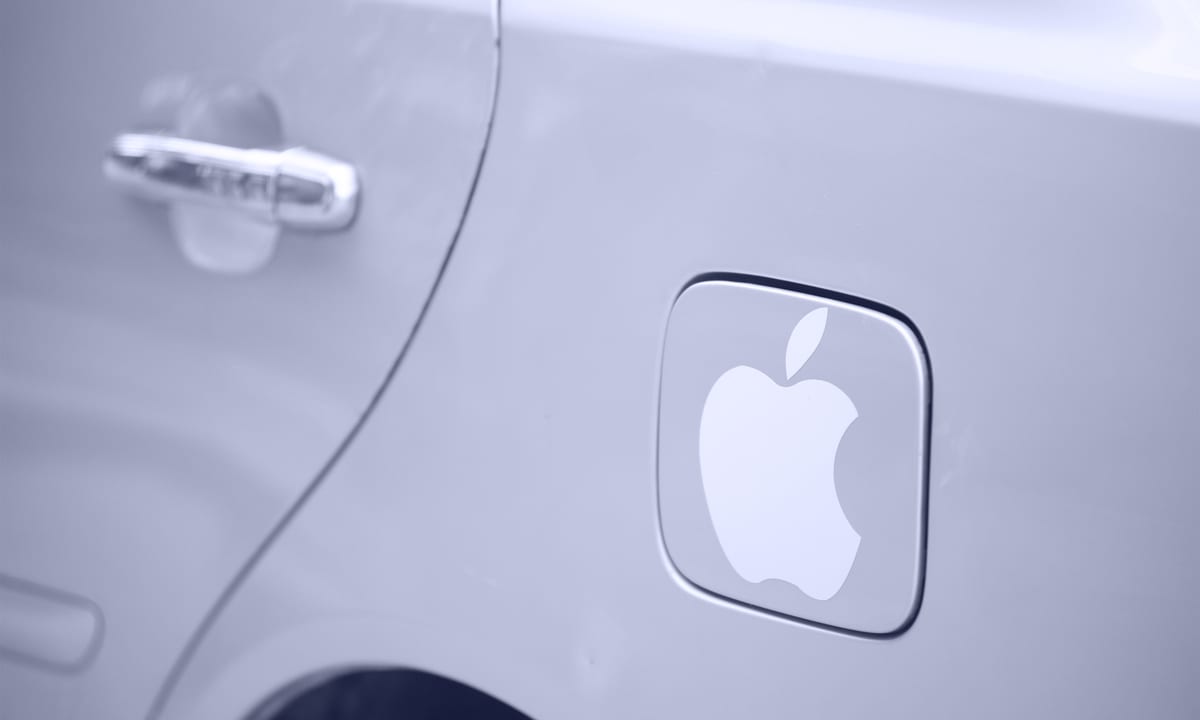Car Wars: Apple And Tesla Could Go Head-to-Head By 2024

After almost a decade of talking, Apple may be close to debuting the iCar, according to reports.
After nearly a decade of sporadic work by a select team of engineers and designers at Apple to build an autonomous vehicle, a report out Tuesday suggests the so-called “iCar” could finally be coming to fruition as early as 2024.
Although the Cupertino, Calif. device maker did not comment on the report or elaborate on its plans, Reuters cites unnamed sources familiar with the project as saying a radically different battery design that is cheaper and able to increase an electric vehicle’s range is at the core of the jumpstarted program’s progress. That report alone has already roiled markets and fueled speculation, paving the way for what seems like 10,000 different potential scenarios and implications as well as countless questions, not least of which is “Why now?”
While the notion of Apple either making its own car or partnering with a major automaker is not new, the latest discussion points directly towards the former, which would set the stage for a head-to-head passenger car matchup against market-leader Tesla. The timing of such a venture also coincides with the gradual but broad industry effort to make driverless cars a reality, an advance that is almost entirely linked to technology — rather than traditional mechanical engineering — which, in turn, is right in Apple’s wheelhouse.
In addition, even though the likes of Tesla have nearly a 20-year head start in the space, there’s also an economic case for an iCar that is unique to Apple.
“If there is one company on the planet that has the resources to do that, it’s probably Apple,” a Project Titan (the code name for the iCar) worker told Reuters, “but at the same time, it’s not a cellphone.”
Not Your Father’s Cellphone
If there is one thing Apple has proven over and over since the first iPhone was launched in 2007, it’s that it has been able to continuously design and develop attractive products that advance the state of the art in digital technology. And while there’s clearly a huge difference between making iPads and manufacturing cars, digital tech is already deeply ingrained in modern vehicles, and doubly so when it comes to hybrid, electric or autonomous vehicles.
“The increase in consumption of semiconductors by the auto industry is primarily driven by the market evolution toward autonomous, connected, electric, and shared (ACES) mobility,” a report from the U.S. International Trade Council said.
As it is, most new vehicles already come with a range of advanced driver assist systems (or ADAS) such as adaptive cruise control, automatic brakes, blind spot monitoring and parallel parking features, the report said. Add in increased emission, mileage and safety standards, as well as consumer demand for commuter connectivity features, and what once was viewed as a mass of metal and wires is now driven by AI technology.
“Conventional vehicles contain an average of $330 [worth] of semiconductor content while hybrid electric vehicles can contain up to $1,000 and 3,500 semiconductors,” the USITC report said.
Nobody’s Laughing
While the iCar may seem out there to some, there’s also the reality that Apple is sitting on over $190 billion of cash as well as a fairly slim and mature product portfolio consisting of phones, tablets, watches and laptops.
There’s also the fact that Apple has shown that “playing well with others” is not its highest priority, as evidenced by its continued closure to outsiders of its Apple Pay platform. On the sixth anniversary of the launch of Apple Pay in November, a PYMNTS study of some 7,585 U.S. consumers showed that of the 7.75 percent of eligible sales in a physical store (a person with an iPhone making a purchase in a store that accepts Apple Pay), only 2.65 percent of purchases in stores that accept Apple Pay were made using Apple Pay, representing just about 1.53 percent of all retail sales.
PYMNTS CEO Karen Webster wrote that the company could be well-served by opening its access to its NFC chip, which is a key technology in Apple Pay and indicative of its “walled garden” approach.
“Maybe if Apple opened up the NFC chip to others, it would support more apps for physical payments — even ones that consumers could use with the billion iPhones that Apple would like to turn into contactless mobile terminals,” Webster wrote. “But, really, the digital-first puck is heading to using smartphones, like the iPhone, and other connected devices to pay in a way that doesn’t involve a consumer interacting with the so-yesterday terminal at the physical point of sale or even being inside brick-and-mortar shop. Innovations that give consumers touchless payments options — card on file, QR codes — and digital wallets, and the “super apps” that cross channels, platforms and operating systems, giving them more than just a way to pay.”
By the way, this would not be the first time Tesla and Apple found themselves in the same conversation. According to The Verge, Elon Musk said Tuesday that he wanted to sell Tesla to Apple during the “darkest days” of the company’s launch but that CEO Tim Cook “refused” to take the meeting. He noted that Tesla was worth about one-tenth then what it is now, as the electric vehicle company finishes a year in which it finished with a market cap of more than $606 billion.
